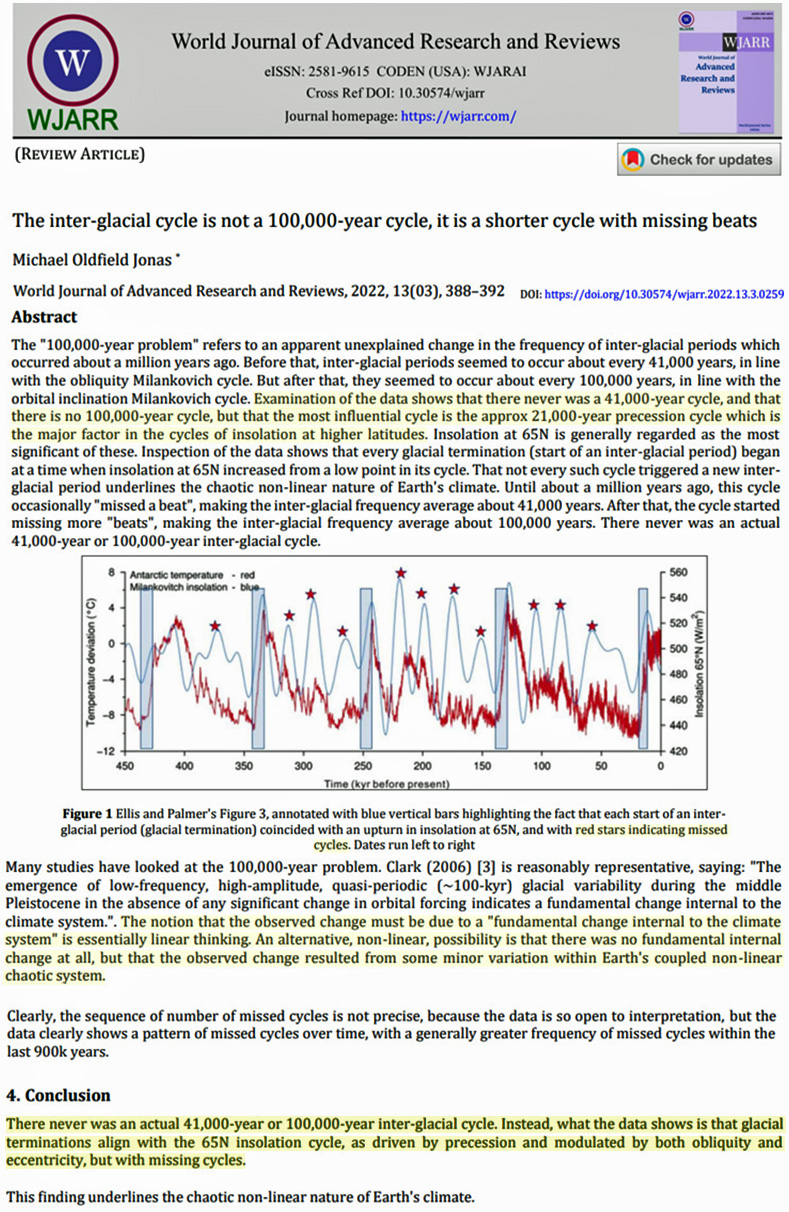A new study identifies a major correlation flaw in paleoclimate research. The “missing” correlations are more common than correlations.
In the past we have identified major contradictions in the widely-accepted contention that the entire Earth freezes its way into glacial climates that cyclically last roughly 100,000 years, interrupted by ~10,000-year interglacials.
This 100,000-year glacial-interglacial cycle supposedly lasted only 41,000 years until the last 900,000 years or so.
But many recent studies show the climate was warmer than today during what has been referred to as the last glacial period, when CO2 was allegedly under 200 ppm. For example:
New Study: The Lowest Tibetan Plateau Glacial Temps Were Still 3°C Warmer Than Today
California’s Mean Annual Temps Were Up To 3.8°C Warmer Than Today During The Last Glacial
New Study Finds Australian Sea Temperatures Multiple Degrees Warmer Than Today During The Last Glacial
Another Study Says Europe Was At Times Warmer During The Last Glacial When CO2 Levels Were 40% Lower
10 Recent Studies Affirm It Was Regionally 2-6°C Warmer Than Today During The Last Glacial
And now another analysis (Jonas, 2022) points out the lack of correlation between Milankovitch cycles and climate and the chaotic, widely varying, non-cyclical nature of glacial and interglacial climate durations and amplitudes. The non-correlations, or “missed cycles,” occur just as or more often than the ones that “hit.”
The conclusion is that “there never was a 41,000-year cycle,” and “there is no 100,000-year cycle” either.
Instead, Earth has operated and continues to operate as a “coupled, non-linear, chaotic system.”






The last sentence is very strong and brave sentence.
It is indeed a “ coupled, non-linear, chaotic system”.
It may be “Strong and brave” to say the truth.
Is that a reason not to say the truth?
There is an important difference between a strong (direct correlation) and weak (intermittent and fuzzy correlation) periodically forced chaotic nonlinear oscillator.
Good that they’re finally looking in the right direction having exhausted all the alternatives.